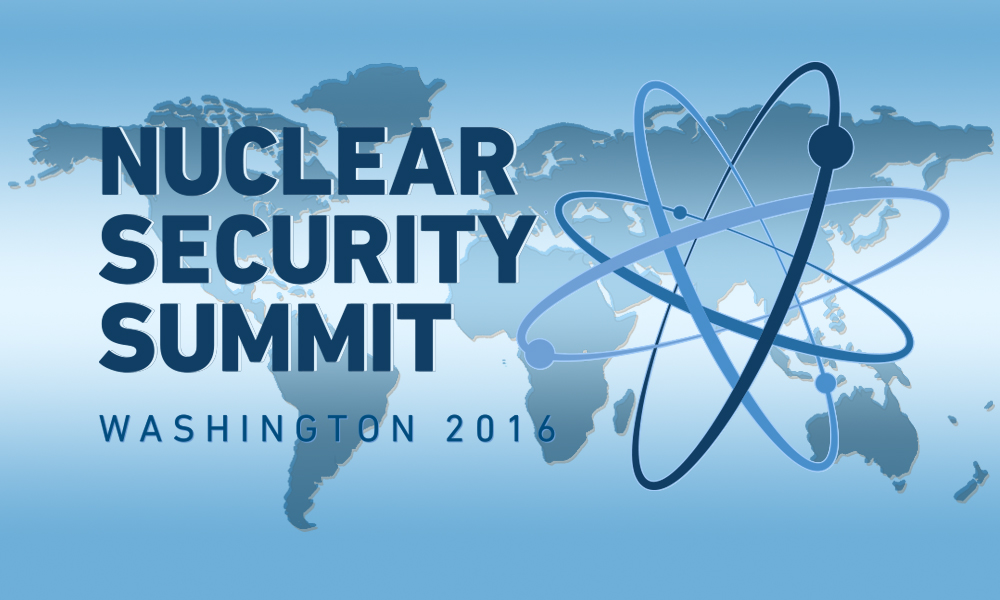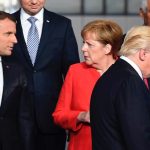by Peter Jenkins
President Barack Obama claimed in The Washington Post on March 30 that the United States had made important progress under his leadership toward the vision he outlined in Prague nearly seven years ago: a world free of nuclear weapons.
In reality, “disappointing” is the epithet that future generations are likely to apply to the president’s achievements—or, rather, the modesty of them—in this domain, during his second administration at least.
President Obama returned to the White House in January 2013 with an opportunity to build on the 2010 New START Treaty, which can be a legitimate source of pride. As he wrote last week, the US [and Russian] “massive Cold War nuclear arsenals are poorly suited to today’s threats. The United States and Russia—which together hold more than 90 percent of the world’s nuclear weapons—should negotiate to reduce our stockpiles further.”
Unfortunately, the president blew any chance of further US/Russian cuts in two ways.
First, he failed to call a halt to the installation of ballistic missile defense (BMD) systems close to Russia’s borders. For at least a decade Moscow has warned Washington that it sees these systems as a threat to the strategic stability—i.e. the rough balance of nuclear forces—that has been the bedrock of détente and successive nuclear weapon reduction pacts.
Washington’s attempts to placate Moscow by asserting that the systems are needed to protect Europe from an Iranian nuclear missile threat have evoked hollow laughter in Moscow, in the absence of any evidence of an Iranian threat of that nature. Even the conclusion last summer of an agreement to ensure the peaceful nature of Iran’s nuclear program has changed nothing: Washington continues to insist on the necessity of installing these systems.
Second, President Obama failed to rein in those in his administration who bear a partial responsibility for the overthrow of a democratically elected government in Russia’s back-yard, Ukraine, in February 2014. Imagine the impact on US readiness to discuss strategic arms reduction with Russia if the latter had been detected, in flagrante, fomenting a coup d’etat in Mexico City, the better to draw Mexico into Russia’s sphere of influence!
The bitterness caused by US and EU insensitivity to the complex nature of Ukrainian identity, and Russian attitudes toward Ukraine, will fade if the United States and Europe have learnt a lesson from the consequences of that insensitivity. But the United States should not imagine that it can engage Russia in building on the 2010 START achievement until and unless it is ready to address Russian BMD concerns.
A Baffling Paradox
Further grounds for disappointment can be found in President Obama’s plans for the next generation of US nuclear forces. He writes that he has ruled out developing new nuclear warheads. Good. But his Department of Defense (DOD) is bidding for funding for a destabilizing expansion of nuclear delivery systems.
Not content with renewing the existing triad—missile launching submarines, land-based intercontinental missiles, and a long-range nuclear bomber force—when two or one system would suffice, the DOD wants to develop nuclear-tipped cruise missiles. These will threaten strategic stability because early-warning systems cannot distinguish between nuclear and conventional cruise missiles (a mirror of the threat to stability posed by Prompt Global Strike conventional vehicles, another DOD “innovative” system).
That a president who dreams of a world free of nuclear weapons should risk a renewal of the US/Russian nuclear arms race by threatening strategic stability is baffling.
An Ally’s Redundant Nuclear Force
Less baffling, but nonetheless puzzling, and certainly disappointing, is that President Obama has failed to encourage the government of the United Kingdom to lead the way toward realizing his vision.
The United Kingdom’s four nuclear missile submarines will be worn out by the late 2020s and early 2030s. Replacing them will cost at least $50 billion, and maintaining them in service for 30 years at least a further $50 billion.
This nuclear force is committed to NATO. The value of that commitment, compared to the value of the US nuclear commitment to NATO’s defense, is nugatory. The United Kingdom intends to deploy no more than 40 nuclear warheads at any one time, compared to the 1,500 or so strategic warheads (plus hundreds of tactical warheads) that the United States can deploy once New START limits are in full force. So it would make sense not to renew a somewhat redundant UK force and instead devote $100 billion over 40 years to boosting Britain’s conventional contribution to NATO’s defense.
Instead of making that point, President Obama’s secretary of defense told a BBC interviewer on February 13, 2016 that Britain’s nuclear force was “an important part” of the deterrent structure of NATO. Secretary Ashton Carter added that the force aided the UK’s “special relationship” with the United States and helped Britain “continue to play an outsized role on the global stage”.
Surmounting “High Hurdles”
The six other nuclear weapon possessor-states are China, France, Israel, India, Pakistan and North Korea. Their composite holding is probably in the region of 900 warheads. None of them has been showing the slightest interest in surrendering these warheads or even in reducing their number. So President Obama cannot fairly be reproached for failure on that front.
Neglect of a modest step toward his vision, however, is another matter. The five possessor-states (P5) that are recognized under the Nuclear Non-Proliferation Treaty (US, UK, France, Russia, and China) have been meeting to consult on NPT matters since the early part of President Obama’s first term. An opportunity to use this grouping to identify the “high hurdles” of which the President rightly wrote last week, and to develop a collective understanding of how those hurdles might be surmounted, exists but has been ignored.
Some of those hurdles are formidable. How can the possessor states get to zero without jeopardizing strategic stability? On what can mutual deterrence rest in the absence of nuclear weapons? How can the four late-comers (Israel, India, Pakistan and North Korea) be induced to join a movement toward zero? The daunting nature of these hurdles is all the more reason, one might think, to put a P5 study group to work as soon as possible.
Of course, humanity should be grateful to President Obama for articulating the goal of eliminating nuclear weapons. But if the President wants to be remembered as more than an articulator of visions, he should use his remaining months to put a stop to BMD in Europe, scotch plans for nuclear cruise missiles, convince the British prime minister to make better use of the limited sums Britain can afford to spend on defense, and persuade the other members of the P5 to start studying how to get to zero, and how to stay there.






What adds to a general feeling of cynicism and uncertainty about U.S. intentions is that the United States is planning to spend about one trillion dollars during the next 30 years upgrading her nuclear arsenal. There are also worrying reports indicating that the United States intends to introduce tactical nuclear weapons to Eastern Europe and maybe in the Baltics in order to “reassure” those countries against “Russian aggression”.
Another disturbing development concerns the repeated reports about both Pakistan and Israel developing tactical nuclear weapons. At the moment, the use of Pakistani weapons requires three different keys in order to make the bombs operational. Apparently, the new “tiny” weapons bypass those safeguards and can be used by the military commanders on the ground.
So, sadly, it can be argued that the world is in a more dangerous state as regards nuclear weapons now than it was when President Obama took office.
You think Obama’s efforts are “disappointing”? Just you wait until Hillary is in charge. It’s not for nothing that her role models and mentors are Albright and Kissinger.